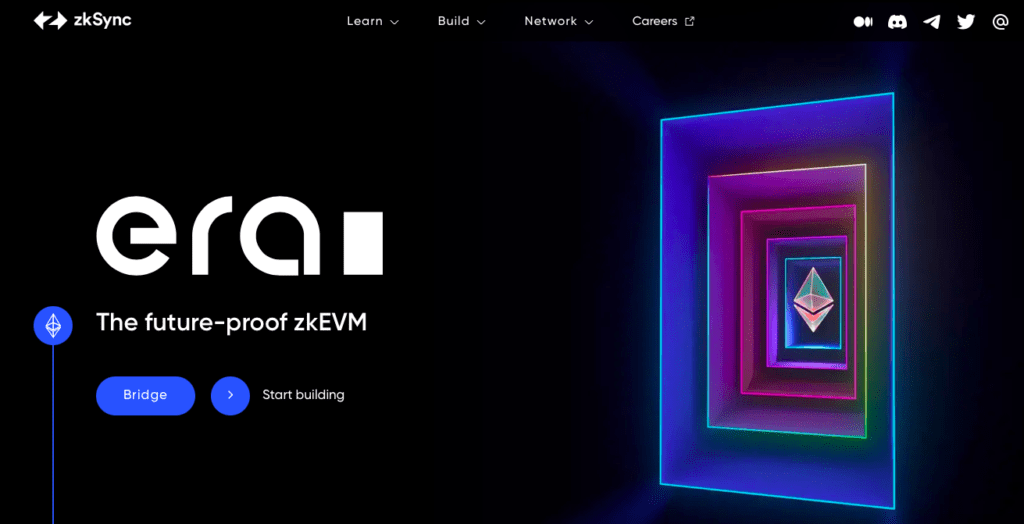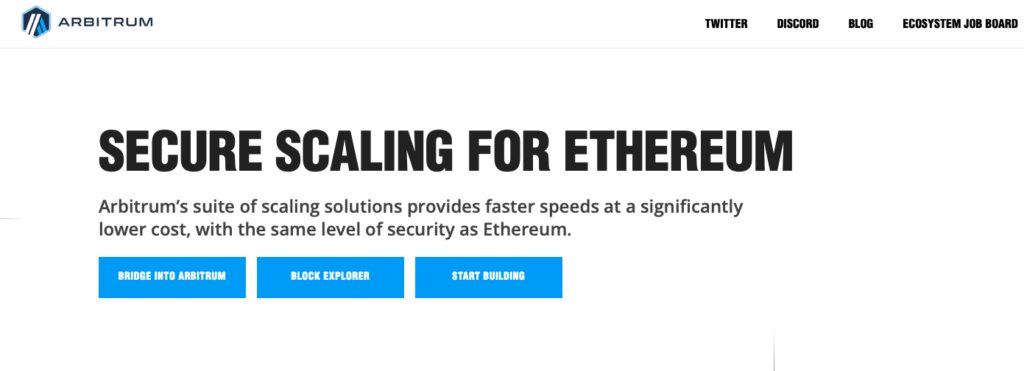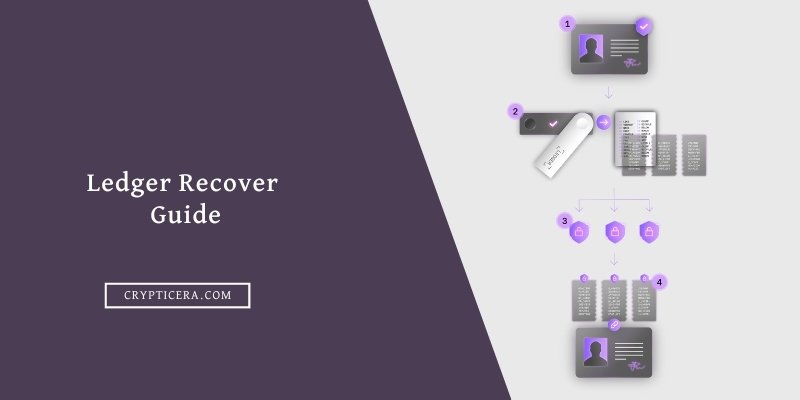In the world of blockchain technology, scalability and speed are crucial factors that determine the success of a project.
As more people adopt cryptocurrencies, the demand for faster, more efficient systems is increasing. The zkSync and Arbitrum solutions aim to address this challenge, but how do they compare?
In this article, we’ll dive deep into the differences between “zkSync vs Arbitrum“, comparing their features, working, scalability, and transaction cost.
zkSync vs Arbitrum: Comparison
zkSync and Arbitrum are both Layer 2 scaling solutions for Ethereum, utilizing roll-up technology.
However, they differ in their consensus mechanisms, with zkSync using zkRollup and Arbitrum employing Arbitrum One Chain with fraud proofs. While zkSync relies on zero-knowledge proofs for security, Arbitrum uses fraud proofs.
In terms of transaction throughput, Arbitrum boasts a higher capacity of up to 40,000 transactions per second (TPS) compared to zkSync’s 2,000 TPS.
Arbitrum also offers near-instant finality, while zkSync transactions require confirmation. Both solutions aim to keep gas fees low, making them cost-effective for users.
| Key Points | zkSync | Arbitrum |
|---|---|---|
| Technology | zkEVM | Rollup solution |
| Scaling | zkRollup | Optimistic rollup |
| Security | Zero-knowledge proofs | Fraud proofs |
| Ethereum compatibility | Ethereum Layer 2 | Ethereum Layer 2 |
| Transaction throughput | Up to 2,000 TPS | Up to 40,000 TPS |
| Finality | Requires confirmation | Near-instant finality |
| Gas fees | Reduces by 100x | Reduces by 10-50x |
| Decentralization | Fully decentralized | Fully decentralized |
| Developer experience | Solidity smart contracts | Solidity smart contracts |
| Ecosystem support | EVM-compatible | EVM-compatible |
| Adoption | Live on mainnet | Live on mainnet |
| zkSync Overview | Arbitrum Overview |
What is zkSync?

zkSync, developed by Matter Labs, is a layer-2 solution that uses zero-knowledge proofs (zk-proofs) to achieve scalability.
It allows users to conduct off-chain transactions and only submits proofs to the Ethereum blockchain, reducing the amount of data that needs to be stored on-chain.
It utilizes zk-proofs to bundle a large number of transactions into a single proof. This proof is then submitted to the Ethereum mainnet, reducing the number of transactions and fees required to process each transaction.
Additionally, zkSync uses rollups to aggregate multiple transactions, reducing the time required to process each transaction.
Advantages of zkSync Era
- High scalability
- Low transaction fees
- High security and decentralization
- Efficient use of gas fees
- User-friendly interface for developers
What is Arbitrum [ARB]?

Arbitrum is a layer 2 (L2) scaling solution for Ethereum, designed to improve the scalability and efficiency of the Ethereum blockchain.
Arbitrum is developed by Offchain Labs, a blockchain technology company. It is designed to address some of the limitations of the Ethereum network, such as high gas fees and slow transaction confirmations.
It aims to achieve faster transaction times, lower transaction costs, and increased transaction throughput compared to the Ethereum mainnet.
Advantages of Arbitrum
- High throughput and low latency
- Low gas fees
- High security and decentralization
- Interoperability with other blockchains
- Compatible with existing Ethereum tools and infrastructure
zkSync vs Arbitrum: Differences and Similarities
Security
Both zkSync and Arbitrum utilize advanced security measures to ensure the integrity of their systems.
zkSync Security Model:
- zkSync is a layer-2 scaling solution that utilizes zero-knowledge proofs (zkSNARKs) to provide scalability and privacy to Ethereum transactions.
- The security of zkSync relies on the underlying Ethereum blockchain, which acts as the ultimate source of truth for all transactions.
- zkSync employs a commit-chain architecture that allows off-chain computation and aggregation of transactions, with periodic commitments to the Ethereum blockchain.
- The validity and integrity of zkSync transactions are ensured through zkSNARK proofs, which are verified on-chain.
- zkSync follows a non-custodial approach, where users retain control of their private keys and funds.
Related: zkSNARKs vs zkSTARKs
Arbitrum Security Model:
- The security of Arbitrum relies on the dispute resolution mechanism, where transactions are initially assumed to be valid, and disputes are resolved through a challenge and response process.
- Arbitrum employs fraud proofs, which allow users to submit proofs of invalid transactions to challenge their inclusion in the blockchain.
- If a fraud-proof is successful, the invalid transaction is rolled back, and the challenger receives a reward.
- Arbitrum also includes a mechanism for users to exit the system in case of any dispute or fraud.
Winner: Both Offer high security for developers and validators
Decentralized
In the context of zkSync and Arbitrum, decentralization refers to the distribution of power and control over the validation and processing of transactions.
In the case of zkSync, the network relies on a set of randomly-selected validators to confirm and bundle transactions, rather than a single centralized authority. This helps to prevent anyone validator from controlling the system and reduces the risk of fraudulent activity.
Arbitrum, on the other hand, utilizes a more complex system of decentralized validation and governance.
The network relies on a large and diverse group of validators to process and validate transactions, with each validator having a stake in the system’s security and success.
In addition, the network employs a transparent governance system that allows stakeholders to participate in decision-making and ensure the continued decentralization of the system.
Winner: zkSync is more decentralized than Arbitrum with randomly selected validators.
Scalability and TPS
zkSync is known for its high transaction throughput. It has achieved impressive TPS numbers, with the ability to handle over 2,000 transactions per second on Ethereum.
Arbitrum is capable of achieving 40,000 TPS, much higher than zkSync, providing a significant boost in scalability.
zkSync primarily supports Ether (ETH) and ERC20 tokens as L2 assets, meaning that users can transfer and trade these assets on the zkSync L2 network.
In contrast, Arbitrum supports a wider range of assets, including native Ethereum assets, ERC20 tokens, and even non-fungible tokens (NFTs), providing more versatility in terms of asset support.
Winner: Arbitrum offers 20x faster transactions than zkSync due to lower block time.
Read: Optimistic Rollups vs zk-Rollups: Which is better?
Transaction Fees
Both zkSync and Arbitrum aim to reduce transaction fees and provide cost-efficient solutions. The reducing factor for zkSync is typically around 100x, meaning that transaction costs can be reduced by a factor of 100 or more compared to Ethereum mainnet transactions.
The reducing factor for Arbitrum can vary depending on various factors, but it is generally in the range of 10-50x.
Winner: zkSync is still in its initial Phase, but is expected to have a lower transaction cost than Arbitrum.
zkSync and Arbitrum: Comparison of Use Cases
zkSync is suitable for use cases that require frequent transactions with low fees, such as micropayments, remittances, and decentralized finance (DeFi) transactions.
It can be used to build DEXs that operate off-chain for order book management and on-chain for settlement, which can improve the trading experience by reducing gas fees and increasing transaction speed. It can also be used for NFT (non-fungible token) marketplaces
Arbitrum is best for a wide range of use cases that require smart contract functionality, such as decentralized applications (dApps), games, and decentralized finance (DeFi) protocols.
Arbitrum is fully compatible with the Ethereum Virtual Machine (EVM), which means that existing Ethereum smart contracts can be easily deployed on Arbitrum with little to no modifications.
This makes it a convenient choice for developers who want to migrate their existing Ethereum projects to Layer 2 without significant code changes.
Also Read: 7 Best zk-Rollup Projects
zkSync zkEVM
zkSync zkEVM project is a protocol that combines two cutting-edge technologies in the blockchain space: zero-knowledge proofs (zk) and Ethereum Virtual Machine (EVM). It is designed to enable scalable and privacy-preserving smart contracts on the Ethereum network.
Users can take advantage of the speed and cost benefits of zkSync’s off-chain batching, while also benefiting from the privacy and security provided by zkEVM’s zero-knowledge proofs.
This opens up new possibilities for building decentralized applications (dApps) that require both scalability and privacy, making zkSync zkEVM an exciting innovation in the blockchain space.
Related: zkSync vs Polygon zkEVM
zkSync vs Arbitrum: Which One to Choose?
If you require fast, low-cost transactions and a user-friendly interface, zkSync may be the better option.
On the other hand, if you require high throughput, interoperability, and a mature ecosystem, Arbitrum may be the better choice.
Final Thoughts
Both zkSync and Arbitrum are actively developing new features and improving their systems.
zkSync plans to introduce support for Ethereum Virtual Machine (EVM) and layer 2 smart contracts, while Arbitrum is exploring cross-chain compatibility and expanding its ecosystem.
Both solutions utilize advanced security measures, maintain decentralization, and provide unique advantages. Choosing between zkSync and Arbitrum depends on your specific use case and requirements.
FAQs
What is the difference between zkSync and Arbitrum?
zkSync and Arbitrum are both Layer 2 scaling solutions that aim to improve the scalability and efficiency of the Ethereum blockchain.
However, zkSync utilizes zero-knowledge proofs to achieve high throughput and low fees, while Arbitrum uses Optimistic Rollups to process transactions off-chain and improve interoperability.
Is zkSync more secure than Arbitrum?
Both zkSync and Arbitrum utilize advanced security measures to ensure the integrity of their systems.
zkSync uses zk-proofs to prevent double-spending and ensure transaction correctness, while Arbitrum uses fraud proofs to ensure that transactions are processed correctly and that the system is secure.
Will zkSync or Arbitrum be compatible with other blockchains?
Arbitrum is exploring cross-chain compatibility and aims to provide interoperability with other blockchains. zkSync may also introduce support for other blockchains in the future.
Related:


